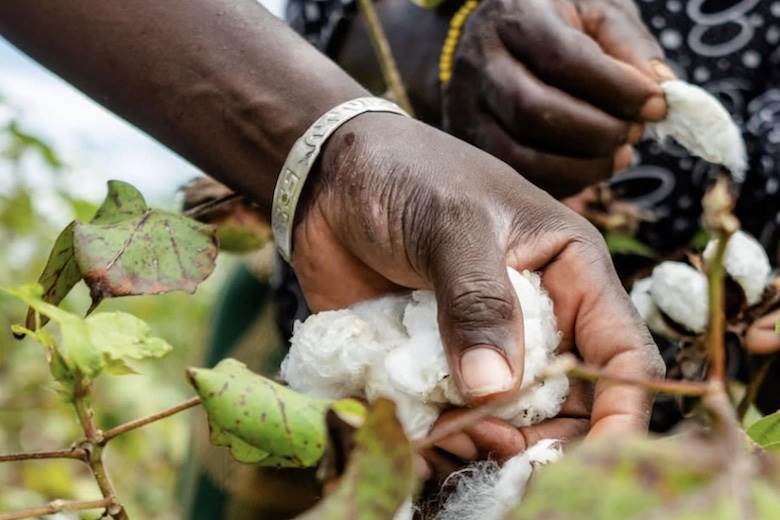Better Cotton now ‘mainstream’, says CEO

International cotton sustainability initiative Better Cotton, headquartered in both London and Geneva, has released its 2021 annual report, covering the 2021-21 cotton season.
“Of the year’s many highlights, I’m proud to share that the Better Cotton programme continued to grow and deliver impact where it mattered most," commented chief executive, Alan McClay. “As of 2021, we can say that Better Cotton is mainstream – representing more than 20% of global cotton production.”
Unpacked, Mr McClay's figure points to how 4.7 million tonnes of Better Cotton – or, according to the organisation, 20% of global cotton production – was grown by 2.2 million licensed farmers across 24 counties over the period. Almost 60 project partners delivered training to in excess of 2.9 million cotton farmers in 26 countries, he added.
Better Cotton’s brand and retailer members, which include H&M, adidas, Nike, VF Corporation, Decathlon and Levi Strauss & Co, purchased 2.5 million tonnes of this cotton, amounting to roughly 10% of global cotton production, it stated. Further, as of 2021, the initiative’s reach now stretches beyond 2,400 members hailing from 63 countries.
Addressing fibre traceability, Better Cotton also noted how it implemented a dedicated advisory panel and sought input from over 1,500 bodies to investigate physical traceability and its feasibility last year, ultimately finding the issue to be “business critical”. Its findings showed that 84% of respondents felt their customers wanted to know where the cotton in the products they purchase was grown, for example.
“We intend to address sourcing and intellectual property issues head on,” Mr McClay explained. Although, he cautioned: “Higher supply chain assurance comes at a cost, as verifying the exact origins of a garment requires more checks and controls. So, the investment of additional resources will be critical.”
Better Cotton also published its goals for 2021-30 last December. Broadly, it will seek to advance a farmer-centric sustainability strategy across five areas: climate change mitigation, soil health, pesticide use, smallholder livelihoods and women’s empowerment.
However, beyond these guidelines, or what it calls “public-facing drivers of change”, the overall “holistic nature” of the Better Cotton standard – which also emphasises biodiversity, fibre quality and water stewardship, for instance – will go unchanged, the report underscored.
Image: Better Cotton via Instagram.








